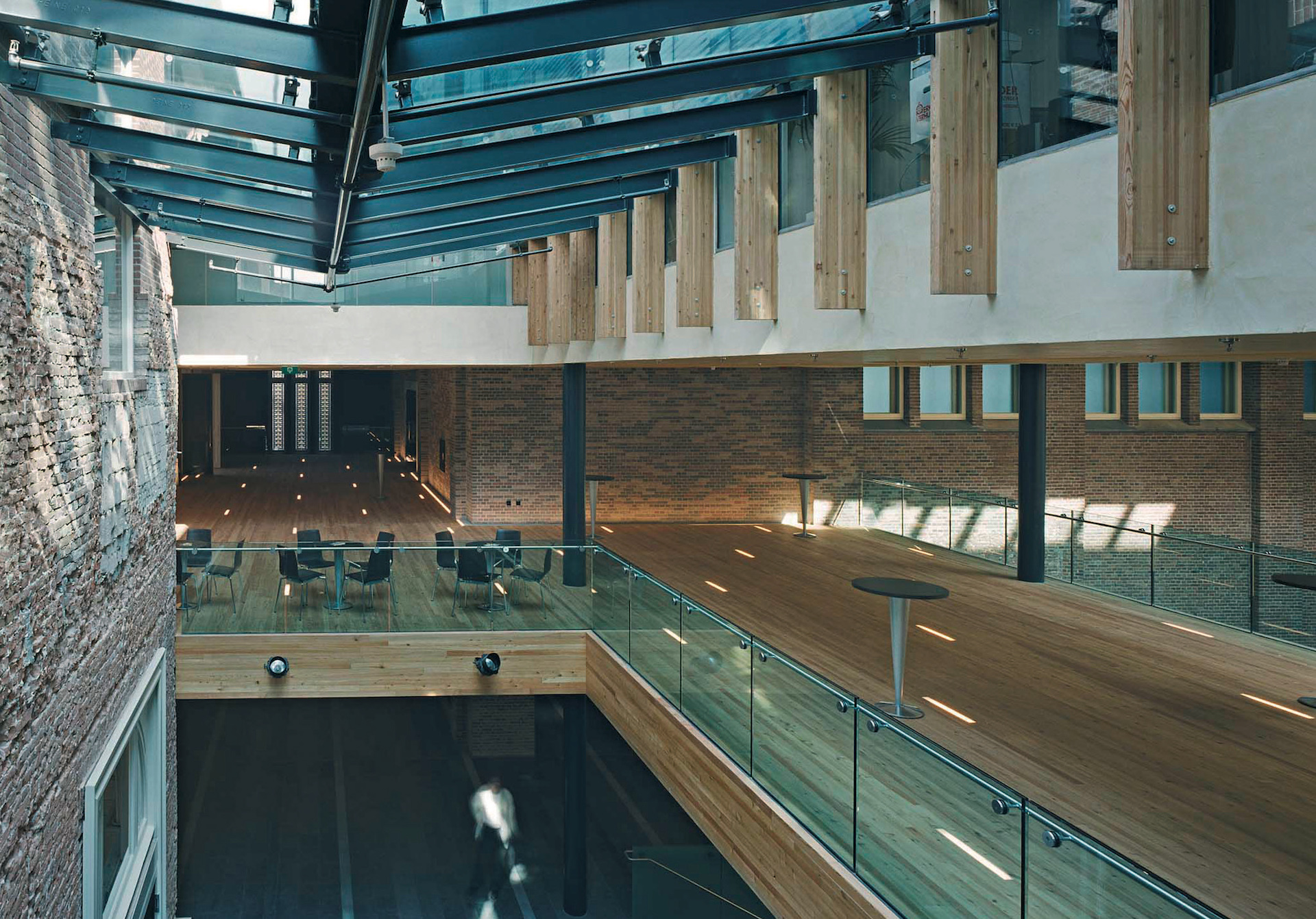Heritage & Design
BK-MI-241
In this minor, you will learn to develop concepts for the transformation of urban areas, landscapes, public spaces and buildings. The basis for these interventions is a historical analysis of the site and knowledge of architectural history. The challenge is to preserve monumental values, existing qualities and the sense of place – while giving way for an intervention that allows for a new function and prepares a site for an up-to-date sustainable use. Studies of heritage and other subjects form an important framework.

Faculty of Architecture and the Built Environment
Language: English
Maximum participants: 40
| Non-selection minor: | |
| Selection minor: |
Education methods
Design studios, lectures, workshops, seminars and excursions.For whom?
- BSc students from TU Delft: all faculties.
- BSc students from Leiden University and Erasmus University: this minor is open to students from most BSc programmes of Leiden University and Erasmus University. For the exact BSc programmes from Leiden University and Erasmus University with which you can apply for this minor please check www.minors.tudelft.nl.
- BSc students from other Dutch universities: students with a background in art history, architectural history, archaeology, landscape architecture, and urban planning.
- BSc students from HBO: HBO students with a background in art history, architectural history, archaeology, landscape architecture, and urban planning.
What will you learn
In the first quarter you will immerse yourself in the issue of cultural-historical continuity and urban identity. In this minor the focus lies on how today we handle cultural heritage and necessary urban renewal with reference to changing functional requirements. Related to the urban renewal we also focus on the use of public areas and historical buildings in an old city.
To approach these complex tasks, you will be challenged to familiarise yourself with the specific design skills and knowledge of urban development of Dutch cities. You will delve into analysis methods and various theoretic approaches, as well as in cultural, societal and philosophical aspects. You will have the opportunity to obtain knowledge in and to practise with aspects as historical identity, value assessment and spatial intervention within objects and structures of cultural heritage in a historical environment.
In the second quarter you will develop your skills as a designer of interventions to historic buildings of cultural heritage quality. History is used as inspiration for the design.
In the studios research is done in small groups. For the design assignments, we will work individually or in pairs applying a transdisciplinary manner, using a variety of design skills (architectural/landscape design, sketching, mood boards, collage, models, etc.).
You will learn the main characteristics and periods of urbanization, landscape transformation in The Netherlands and the stylistic, typological and iconographic developments of Dutch architecture an art from the tenth to the twenty-first century.
You will practise in analysis of urban, architectural and landscape heritage and will make two simple interventions: 1. in a cultural landscape or urban green heritage site; 2. in an existing building (complex).
At the end of the minor you will have enhanced/improved your:
- knowledge about the main characteristics and periods of urbanisation and landscape transformation in The Netherlands from the tenth to the twenty-first century;
- ability to place these developments in their art-historical, economic, political and demographic context;
- ability to apply different methods and techniques for analysis of built heritage, regarding its urban context and historical development, the functionality, the materials used, and the technical development;
- ability to recognise current urban problems concerning cultural heritage;
- knowledge about approaches and work methods concerning appreciation, repurpose, and redevelopment of historically valuable objects within a historic town;
- ability to make a small-scaled landscape architectural design for an intervention in the cultural landscape or green heritage;
- understanding of ‘Architectural Heritage’ and relevant terminology (e.g. ‘Values of Heritage’, ‘Intangible Cultural Heritage’, ‘Integrity’, ‘Reversibility’, and ‘Authenticity’, etc.).
- ability to make architectural and spatial design choices on different scales, based on analysis and evaluation of current historical information;
- ability to put historic research and contextual analysis in a functional relation with a design task;
- ability to combine the existing building fabric, methodically recorded and analysed, with your own modern design concept to create a stimulating project;
- ability to present and explain your design choices, justify your position about merging old and new in case of an architectural intervention.
Course overview
This minor consists of 2 quarters with a total of 30 ECs.
The programme consists of three lecture series and three studio assignments, accounting for a total of 30 ECs.
- History of Dutch Cities and Landscapes - lecture series (BK7551 in the first quarter): 5 ECs
- History of Dutch architecture and art - lecture series (BK7554 in the first quarter): 5 EC
- Heritage: Theory and Practice - lecture series (BK7552 in the second quarter): 5 ECs
- City and Transformation - studio assignments (BK7555 in the first quarter): 5 ECs
- Landscape and Transition - studio assignments (BK7550 in the first and second quarter): 5 ECs
- Architecture and Re-use - studio assignment (BK7553 in the second quarter): 5 ECs
The lecture series will be followed by a written exam. The studio assignments will be followed by a presentation of the analysis reports and a presentation of landscape design proposals.
For course descriptions, please visit the study guide.
Contact
Student about this minor: